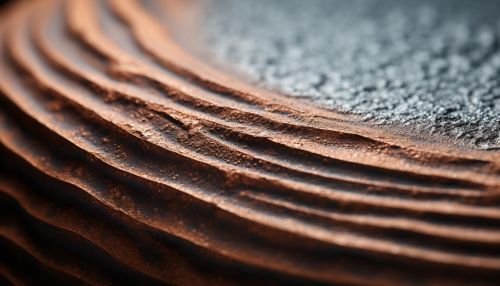Matter
Introduction
Matter is a physical substance that occupies space, possesses mass, and is perceptible to the senses. It is a fundamental concept in the field of physics, and is studied in depth in both chemistry and biology. Matter is everything that makes up the universe, from the smallest particle, the quark, to the vast expanse of interstellar dust and gas.


Properties of Matter
Matter has several fundamental properties. These include mass, volume, and density.
Mass
Mass is a measure of the amount of matter in an object. It is usually measured in kilograms (kg) or grams (g). The mass of an object is a fundamental property of the object; a constant that does not depend on the forces acting upon the object or the object's location.
Volume
Volume is the amount of three-dimensional space that matter occupies. It is typically measured in liters (L) or cubic meters (m^3). The volume of an object can change depending on the state of the object; for example, a gas can expand to fill a larger volume, or be compressed into a smaller volume.
Density
Density is a measure of mass per unit volume. It is typically measured in kilograms per cubic meter (kg/m^3). The density of an object can provide important information about the object's composition and structure.
States of Matter
There are four traditional states of matter observable in everyday life: solid, liquid, gas, and plasma. Each state has distinct physical properties.
Solid
A solid is characterized by its rigidity and resistance to changes in shape or volume. Atoms in a solid are closely packed together and vibrate about fixed positions.
Liquid
A liquid is a nearly incompressible fluid that conforms to the shape of its container. The atoms are closely packed, but move freely around each other.
Gas
A gas is a compressible fluid. Not only will a gas conform to the shape of its container, but it will also expand to fill the container.
Plasma
Plasma is an ionized gas, a gas into which sufficient energy is provided to free electrons from atoms or molecules and to allow both species, ions and electrons, to coexist.
Classification of Matter
Matter can be classified into two broad categories: pure substances and mixtures.
Pure Substances
A pure substance is a form of matter that has a constant composition and properties that are constant throughout the sample. Pure substances include elements and compounds.
Mixtures
A mixture is a physical combination of two or more substances that retain their separate identity. They can be classified as homogeneous or heterogeneous mixtures.
Changes in Matter
Matter can undergo physical and chemical changes.
Physical Changes
Physical changes are changes in the physical properties of matter. They do not result in the formation of new substances.
Chemical Changes
Chemical changes, or chemical reactions, result in the formation of new substances. These changes are often accompanied by the absorption or release of energy.
Conclusion
Matter is a fundamental concept in the physical sciences. Its properties and behavior are studied in physics, chemistry, and biology, and understanding these properties is crucial to our understanding of the natural world.
